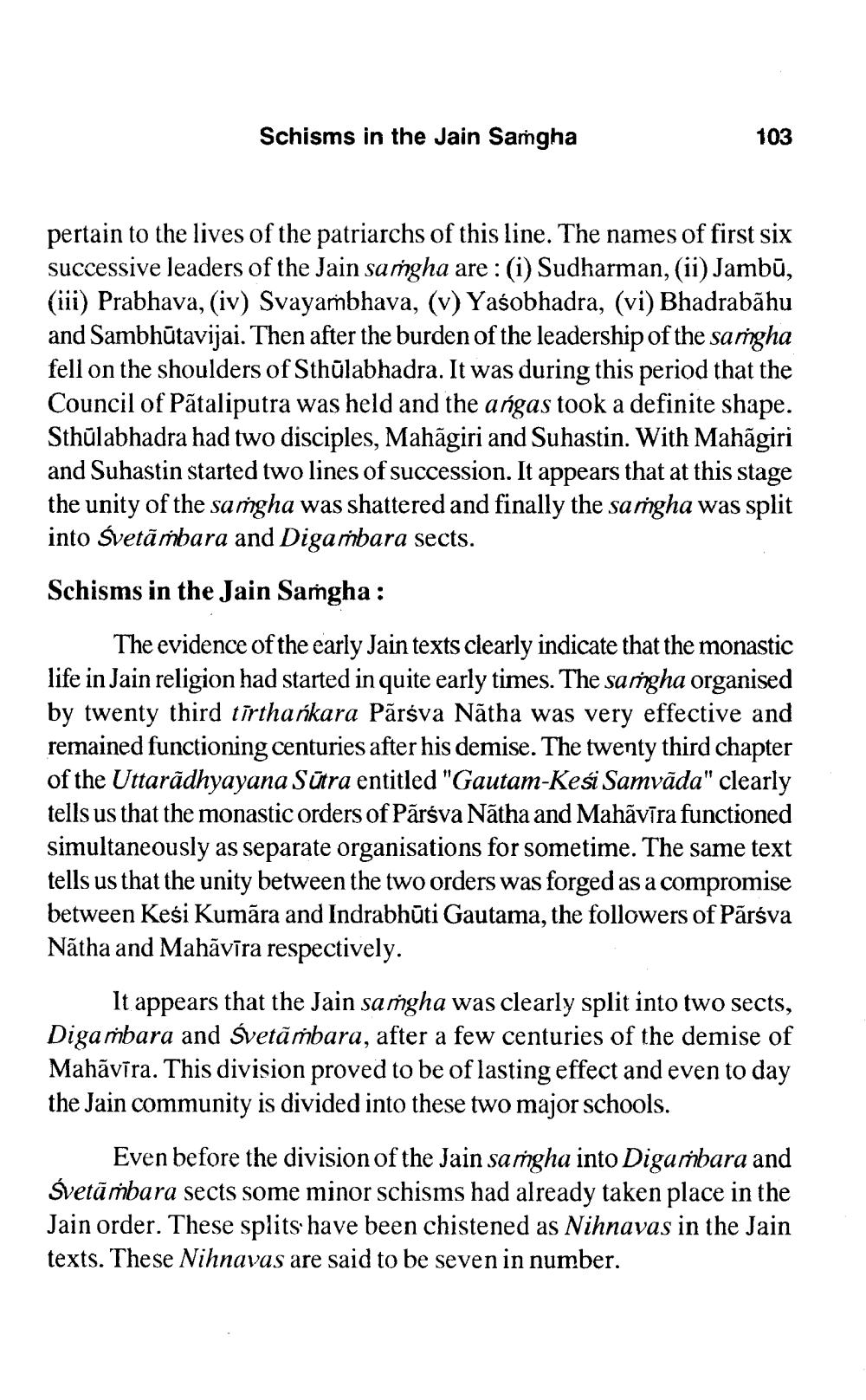________________
Schisms in the Jain Samgha
103
pertain to the lives of the patriarchs of this line. The names of first six successive leaders of the Jain samgha are: (i) Sudharman, (ii) Jambū, (iii) Prabhava, (iv) Svayambhava, (v) Yaśobhadra, (vi) Bhadrabahu and Sambhūtavijai. Then after the burden of the leadership of the samgha fell on the shoulders of Sthulabhadra. It was during this period that the Council of Pataliputra was held and the angas took a definite shape. Sthulabhadra had two disciples, Mahagiri and Suhastin. With Mahagiri and Suhastin started two lines of succession. It appears that at this stage the unity of the saṁgha was shattered and finally the saṁgha was split into Svetambara and Digambara sects.
Schisms in the Jain Samgha:
The evidence of the early Jain texts clearly indicate that the monastic life in Jain religion had started in quite early times. The samgha organised by twenty third tirthankara Parsva Natha was very effective and remained functioning centuries after his demise. The twenty third chapter of the Uttaradhyayana Sūtra entitled "Gautam-Kesi Samvada" clearly tells us that the monastic orders of Parsva Natha and Mahāvīra functioned simultaneously as separate organisations for sometime. The same text tells us that the unity between the two orders was forged as a compromise between Kesi Kumāra and Indrabhūti Gautama, the followers of Pārsva Natha and Mahāvīra respectively.
It appears that the Jain saṁgha was clearly split into two sects, Digambara and Svetaṁbara, after a few centuries of the demise of Mahāvīra. This division proved to be of lasting effect and even to day the Jain community is divided into these two major schools.
Even before the division of the Jain samgha into Digambara and Svetambara sects some minor schisms had already taken place in the Jain order. These splits have been chistened as Nihnavas in the Jain texts. These Nihnavas are said to be seven in number.




